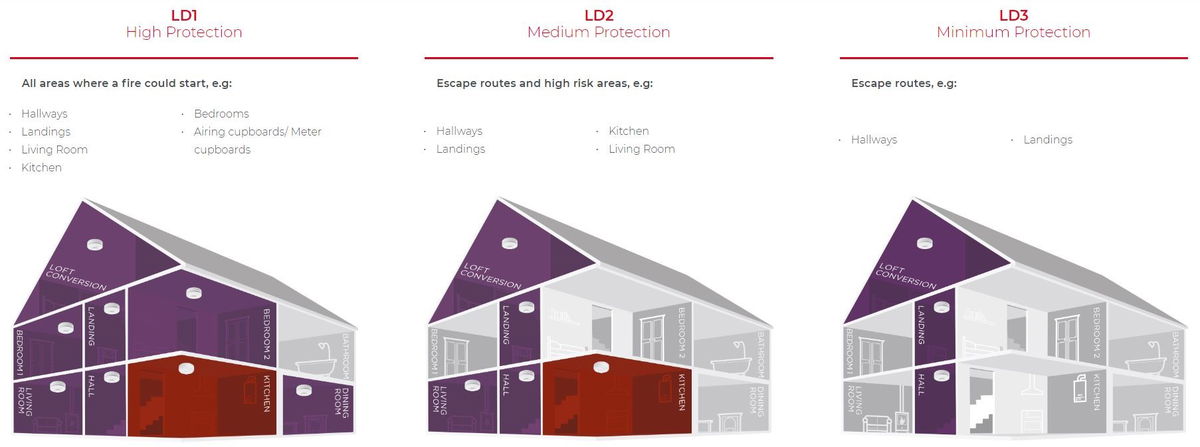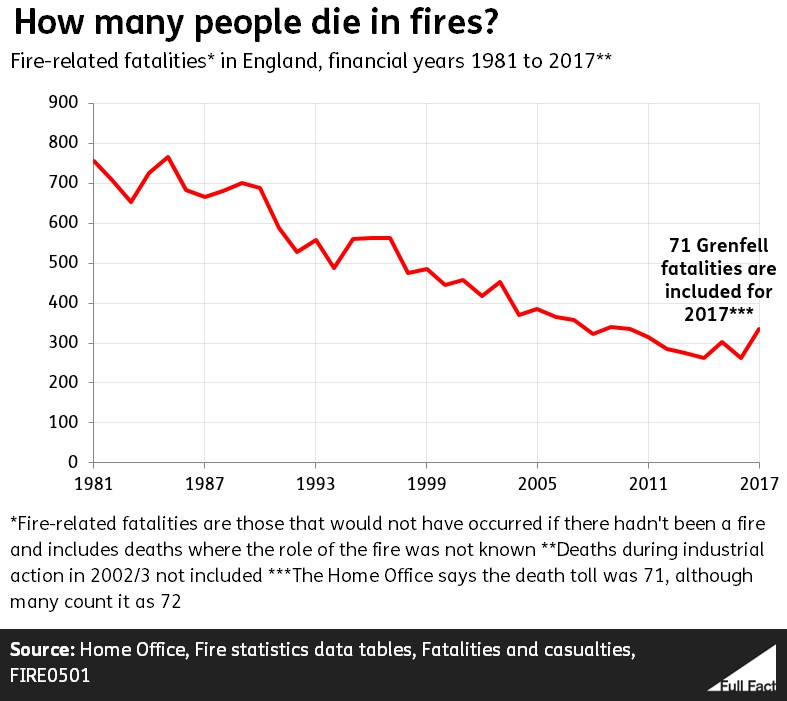Earlier this year, a key part of the British Standard for domestic fire detection and alarm systems (BS 5839) was updated. Chair of the FSA Tom Brookes looks at the changes to Part 6, regarding domestic premises.

In 2017/18, fire-related deaths in England rose by a quarter compared to 2017/18, from 263 to 334. The death toll in 2017 was itself a sharp increase on previous years, in part due to the Grenfell Tower tragedy which claimed 72 lives, making 2017 the worst year for fire deaths since 2010/11.
Despite the increase over the last two years, we should remember that domestic fire deaths per year overall have been following a downward trend since 1980, which (perhaps coincidentally) is the year BS 5839 was first introduced.
Statistically, fatality rates in fires where there’s a working smoke detector are between two and three times lower than in fires where no correctly functioning detector is present.
Since its inception, the BS 5839 series of Standards has grown into nine parts, making the distinction between domestic and non-domestic premises and dealing with a range of specific systems in detail.
Part 6, the part of the Standard covering domestic premises, was first published in 1995 and has since become a key reference point for industry specifiers, architects and safety personnel.
It is therefore vital that the changes in BS5839 -6:2019 as well-understood by the fire and security industry. They were made to reflect new technologies and the new ways we use alarms in different premises, with a view to increasing residential safety, and further reducing fatality rates.
Below are some of the key points to be aware of:
Grades explained
For the purpose of specifying a fire detection and fire alarm system, the standard has both grades and categories of system. There are six grades, A to F, with grade A being the most comprehensive incorporating smoke detectors, sounders, break glass and central control approved to BS 5839-1 down to grade F, battery powered smoke alarms.
In BS 5839-6: 2019, Grades B and E have been removed entirely. Grades D and F have been sub-divided into Grade D1/Grade D2 and Grade F1/Grade F2.
Where Grade D previously covered mains-powered alarms with battery back-up, D1 now applies to mains-powered alarms with integral tamper-proof battery back-ups, and D2 applies to mains-powered alarms with replaceable battery back-ups.
Where Grade F previously referred to battery-only alarms, F1 covers alarms with tamper-proof battery power supplies and F2 covers alarms with user-replaceable battery power sources.
Reviewed categories
The Standard states that the level of protection to occupants needs to be directly related to the fire risk. However it does list three Categories of system, which describes the level of protection the systems provide.
Where and how many alarms are installed will affect how quickly a fire is detected. Generally, the higher the Category of system, the higher the level of protection. See the graphic below for a breakdown:

Source: Aico Ltd, Changes to BS 5839-6, www.aico.co.uk/BS5839-6
Revisions in Table 1
Recommended grades and categories of protection for different types of residence have been altered. The new system is outlined in the flowing table:
|
Type of dwelling |
Grade, Category |
|
Owner occupied (new/materially altered) |
Grade D2, LD2D |
|
Rented (existing and new/materially altered) |
Grade D1, LD2D |
|
Sheltered housing (existing) |
Individual dwelling: Grade D2, LD2Q. Communal areas: Grade A, L4/L5 |
|
Sheltered housing (new/materially altered) |
Individual dwelling Grade D2, LD1J. Communal areas Grade A, L4/L5 |
|
HMOs (new/materially altered) |
Grade 1, LD1 |
Testing and maintenance
Although the British Standards have always provided recommendations for weekly testing, ‘testing and maintenance’ now has its own table – Table 3. For domestic alarms, testing is now recommended monthly.
Additional guidance
In additional updates, new recommendations have been made, so that:
- Mains-powered carbon monoxide (CO) alarms may be interconnected with fire detection systems
- The blocking or delaying of fire alarm signals transmitted via social alarm systems in sheltered housing to a receiving centre is prevented
- Fire detection in supported housing is improved
- Communal fire alarm systems should not normally be installed in purpose-built blocks of flats
ECA Members can access Technical Bulletins explaining changes to BS 5839-6 by logging in to www.eca.co.uk
Further information can also be found on the Aico website at www.aico.co.uk/BS5839-6 and https://www.aico.co.uk/technical-support/guides-publications/

